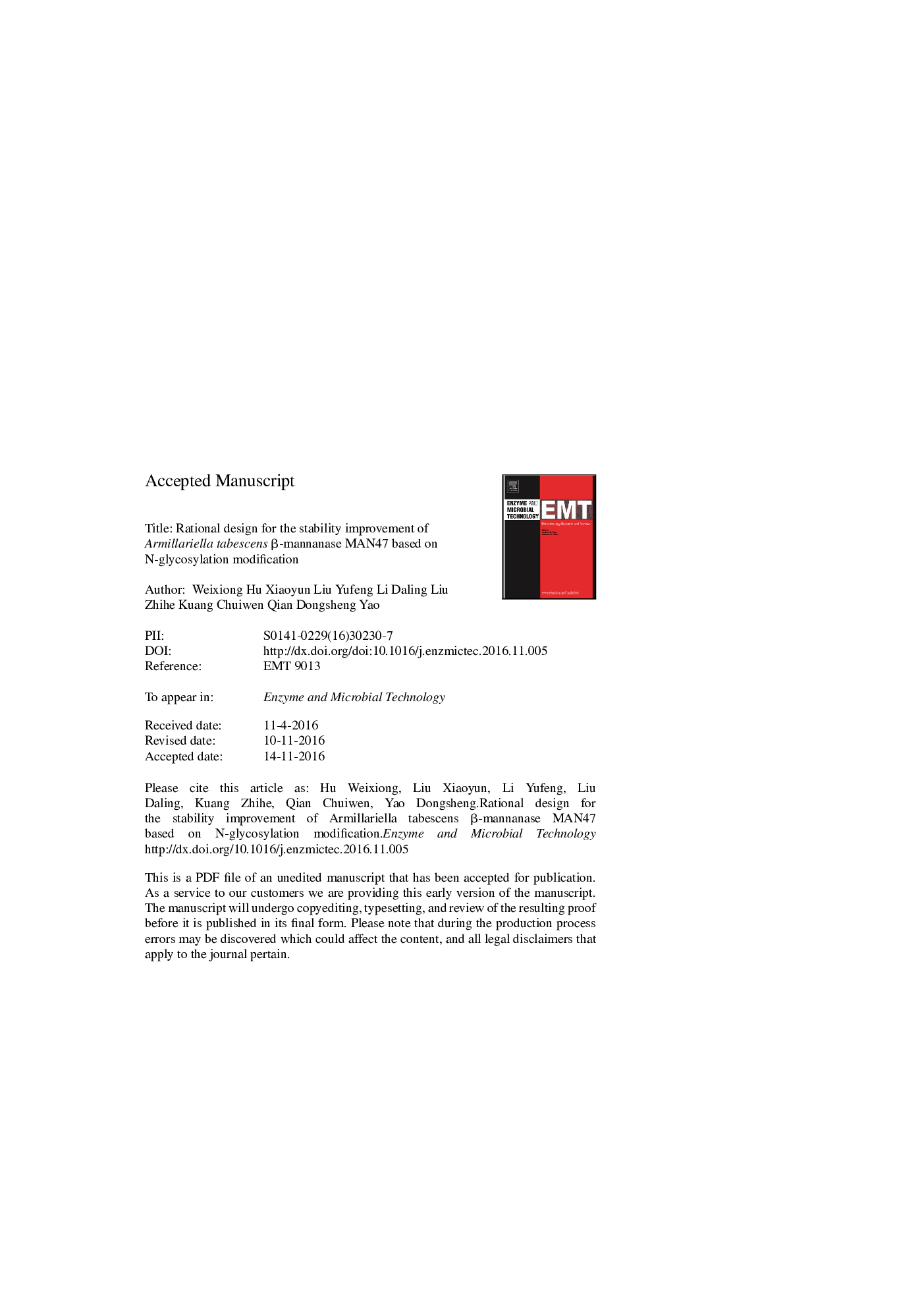| Article ID | Journal | Published Year | Pages | File Type |
|---|---|---|---|---|
| 4752885 | Enzyme and Microbial Technology | 2017 | 24 Pages |
Abstract
β-Mannanase has been widely used in industries such as food and feed processing and thus has been a target enzyme for biotechnological development. In this study, we sought to improve the stability and protease resistance of a recombinant β-mannanase, MAN47 from Armillariella tabescens, through rationally designed N-glycosylation. Based on homology modeling, molecular docking, secondary structure analysis and glycosylation feasibility analysis, an enhanced aromatic sequon sequence was introduced into specific MAN47 loop regions to facilitate N-glycosylation. The mutant enzymes were expressed in Pichia pastoris SMD1168, and their thermal stability, pH stability, trypsin resistance and pepsin resistance were determined. Two mutant MAN47 enzymes, g-123 and g-347, were glycosylated as expected when expressed in yeast, and their thermal stability, pH stability, and protease resistance were significantly improved compared to the wild-type enzyme. An enzyme with multiple stability characterizations has broad prospects in practical applications, and the rational design N-glycosylation strategy may have applications in simultaneously improving several properties of other biotechnological targets.
Keywords
Related Topics
Physical Sciences and Engineering
Chemical Engineering
Bioengineering
Authors
Weixiong Hu, Xiaoyun Liu, Yufeng Li, Daling Liu, Zhihe Kuang, Chuiwen Qian, Dongsheng Yao,
